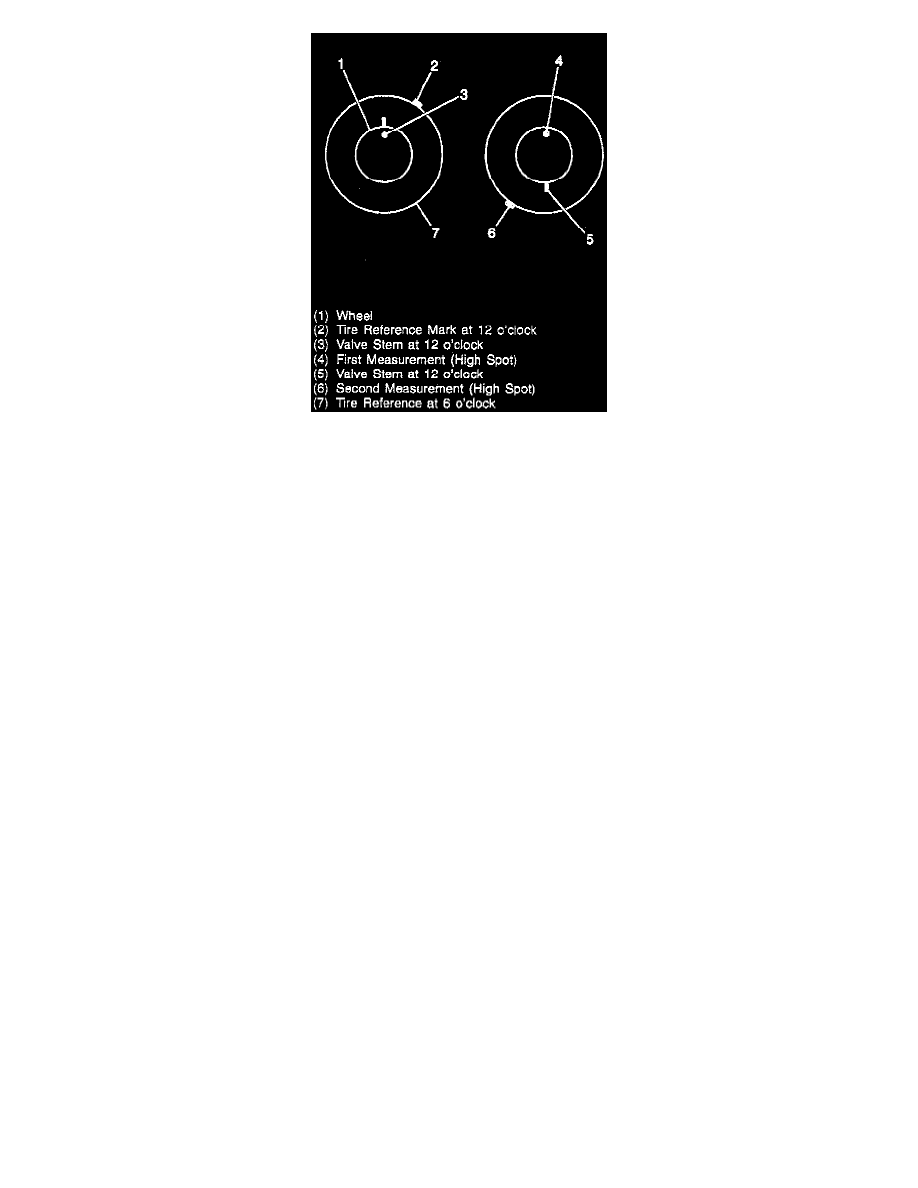G 1500 1/2 Ton Van V6-4.3L VIN W (1997)

1. Mark the wheel hub bolt nearest the valve stem for reference.
2. Rotate the assembly two wheel hub bolts and recheck the runout.
-
Several positions may have to be tried to locate the optimum location.
-
This can be effective for both radial and lateral runouts.
3. If there is some looseness in the wheel hub bolt holes, radial runout can be reduced by loosening the hub bolt nuts slightly, moving the wheel
position on the bolts and then re-tightening the nuts.
4. Balance the tire and wheel to the hub and rotor.
-
Compensates for any imbalance in the brake rotor, drum or wheel cover.
Checking Tire and Wheel Runout
Some vehicles are sensitive to tire and wheel assembly runout. Tires that are satisfactory on one vehicle might be unsatisfactory on another. When
analyzing vibration problems, it is important to keep this in mind.
In addition, different wheel positions on a vehicle may have different sensitivity levels. Check for wheel runout or total wheel and tire runout in the
following cases:
1. If the tire and wheel vibration occurs below 64 kilometers per hour (40 mph).
2. If all wheels are balanced within one ounce of static balance and five ounces of dynamic balance, and a vibration occurs.
3. If there appears to be a bulge in the tire or an out-of-round condition as the tire rotates on a balancer.
4. If any wheel damage is noticed.
5. If there is a poor wheel fit on the hub and the vehicle exhibits vibration.
